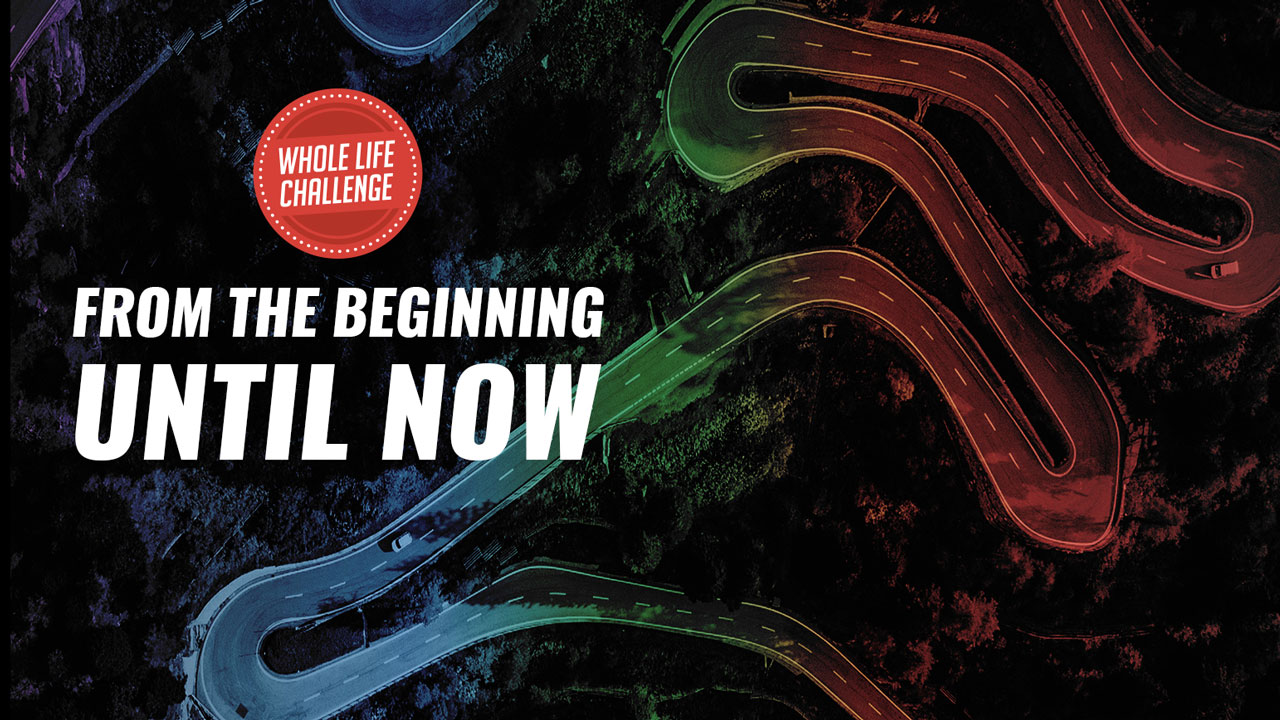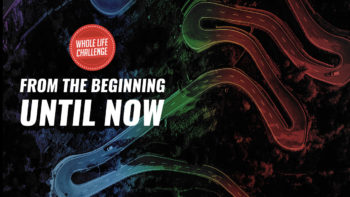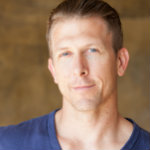 Reading Time: 12 minutes
Reading Time: 12 minutesOn Saturday, April 11, the Whole Life Challenge will launch “The Journey,” a new 12-week experience that signals the start of our next evolution. So we’ve decided to share a story with you — a story that will help you understand our own journey in starting the Whole Life Challenge and how we ended up where we are now.
EVERY JOURNEY STARTS WITH A SINGLE STEP…
Most times you don’t even realize you’ve taken it. The opportunity is to see our life as a journey, one that is a cycle of opportunities, mentors, tests, allies, ordeals, and rewards. Every obstacle as an opening, a chance to discover and grow. With that mindset, it doesn’t matter if you know you’ve taken the “first step.”
It feels like a journey of a thousand miles since we started the Whole Life Challenge back in 2011. Many of you have been on it with us for years, some of you the whole dang time. As a community we have redefined for ourselves (and many of the people we care about) how to come together around health and well-being, how to learn to integrate changes, get results that last, build a life around us that encourages us to be healthy, and have fun doing it.
Nine years later, it looks like we are about to embark on another journey.
The last nine years have been a journey that neither Andy or I knew we were going to take. It simply started as a new idea for doing things a little differently. A small change that made a big difference. Looking back, I think I can say what the first step was. It was in San Diego, CA at the end of 2010. We were attending a seminar that CrossFit headquarters was testing out, something to offer to help people understand nutrition.
Andy and I were there (along with Becca, CFLA’s manager at the time) to see what it was all about. It was two days of slides and science, charts, and graphs. We were bored stiff. The info was important, but there was no way this was going to help us help our clients. It was just too dull.
After day one, Andy and I sat in bunk beds in our hostel (haha, picture THAT) and we brainstormed an idea. What if we did something better? Something more interesting and engaging? We outlined it that night. It would be information, interaction, a small, tight knit group, accountability with a coach and each other, and testing to show that it worked.
When we got back to LA, we launched Food University—our attempt to help our clients not just understand nutrition, but eat better and get better results. We were excited and very hopeful. We recruited 12 members who were eager to try something new and make a change. And it was, well, a total flop. We made the same mistakes CrossFit made. Too much information and not enough experience, not enough real support making real choices day in and day out.
After talking with the clients I had taken through the course (those that remained), I went to Andy’s office and said, “I think I have an idea…” What if we made the whole thing a GAME? CFLA had done FITNESS challenges for years. What if we made it all—your health and your fitness, inside the gym and out—a game? Challenged people to make better choices every day, made them accountable for ones we saw and the ones we didn’t. A quick whiteboard session and the Whole Life Challenge was born. We even had members who were programmers build us a little website to make it all happen.
It was a little different than from today. What we really started out to do was make nutrition different. We had taught nutrition, we had done nutrition plans, we had done food journals, even one-on-one accountability. Nothing really helped people take consistent action.
The first WLC was four habits—nutrition (3 points), and 1 point each for exercise, mobility, and fish oil (it was a hot topic in 2011!). The Well-Being Practices you know were in there as weekly bonuses. That was how we snuck in touches of some of the habits that would come later—sleep, water, and practices like meditation. And boy did it take off. From start to finish people were EXCITED! They came together and supported each other, they challenged themselves to do better and be consistent, they did things they had never done before, and the results showed.
People lost more than weight and inches (and they lost a lot of that). They lost—or better, gave up—the sense that something like that wasn’t possible for them.
That first Whole Life Challenge ended just about 9 years ago this spring exactly and it’s when this journey really got its stride. But it had really barely just started…
ANSWERING THE CALL…
Every so often an opportunity comes along—an adventure. We don’t always take them. That much is up to us. But if we do, if we seize on the ones that call to us, that are there because we asked for them, we will always learn, always grow.
At the end of the first Whole Life Challenge in the spring of 2011, we still didn’t really know what we had. It was a big success, sure, but we had no idea that the idea could grow beyond our little gym. We finished the Challenge with a huge finals event and celebration, gave out tons of prizes, and kind of just put the Challenge on the shelf. We figured we’d do it again in a year and just moved on with 2011.
As we started talking about the Challenge again for 2012, people started to tell us stories about the first Challenge. One client had had a friend shadow him on a spreadsheet since he wasn’t a member of our gym. *Facepalm* Why not let our members invite any friends and family they wanted? We opened it up for them to bring in their communities and not only did it double in size but we discovered that people we were never going to meet could get the same kinds of results even if they never set one foot in our gym. The stories we heard from our members about family, even family that lived on the other side of the country stunned us. What mattered was the game, the connection, the accountability.
We started to understand that we’d created something special and began to ponder how to get it out in the world. And like many journeys, came someone along just at the right moment to show us how.
Andy had for several years built a business with a partner consulting CrossFit gyms. He had sold his portion of the company to his partner, but his partner was still a member of our community. He had about 300 gyms he was working with and they had heard for over a year about this thing we were doing and they wanted to try it! He suggested we do a launch of this idea with his clients—they were primed and ready to go.
With the help of another client we rebuilt the site and without having any idea what to expect, launched the first worldwide WLC in the Fall of 2012. We opened registration and we were floored. Almost 150 gyms registered and we had nearly 8000 participants show up.
What a blast that was. Eight weeks (yeah, back then it was eight weeks long) of shooting videos, coming up with new ideas, and supporting gyms supporting their communities. We knew we wanted to keep doing this. We were hooked. The Challenge worked for us personally, it worked for our clients, it worked for their family and friends, and now it worked for whole communities of people—all over the world!
We were very excited about the road ahead and made big plans. And we had no idea what was about to happen. Within three months of our first successful Challenge, we almost killed the whole thing…
A JOURNEY IS NEVER A STRAIGHT LINE…
Sometimes we feel like we’re moving backwards, sometimes straight down. We make missteps all the time. But what we learned was that an obstacle can be a path—to understanding, to creativity, and to growth. A commitment isn’t about getting everything right. It’s about knowing what you stand for and being willing to struggle and continue on for what you know is worth it.
With the first successful worldwide Challenge behind us, Andy and I decided we wanted to try something new. We decided we were going to build a whole new game on top of updating the WLC. It was a rookie mistake (with probably a fair helping of ego) and it almost sank the whole thing. Not only were we adding new habits to the Challenge—water and lifestyle (the predecessor the Well-Being Practices) would become habits 5 and 6—we were also adding the ability to reflect daily as a way to earn bonus points. But we lost focus, we got to work on our new venture, “Training Camp.” For the next month we brainstormed and tried to work out the details of this new “evolution.” We actually had no idea how much work updating the WLC website would be, but we were about to find out.
We had pushed the WLC to the back burner without really even noticing. Around mid-December Andy turned to me and said “hey, what’s up with the WLC for the New Year?” I froze. We hadn’t done anything! We needed to make updates to the site that we hadn’t started, and even though people had been registering, we had been ignoring many of the responsibilities we had to the Challenge because we had gotten distracted by a shiny new object!
We turned our attention to the WLC, but it was almost too late. We had precious few weeks to get things in order and we were way behind. The guy who built our site wasn’t available and we had no developers. We put out a call on Facebook to find developers and fortunately got really lucky. We pulled together a rag-tag team of 5 or 6 guys from around the country and went to work. We worked practically around the clock, sometimes literally falling asleep with our developers on Google Hangouts at 2:00am to try and be ready.
We considered pushing back the date of the Challenge and were convinced not to do it. We crossed our fingers and launched the Challenge on its planned date for 10,000 people and the whole thing basically crashed. Our first major success was still in our rear view mirror and we were about to blow the whole thing. Probably the worst thing that happened was when people’s scores started disappearing every day. They’d come back and the score they recorded the day before was gone. Can you imagine? We had to build a brand new feature on the fly that allowed us to open up scoring for people for previous days to record an old score (hello, Mulligans!).
Andy and I were in a full panic. The community was understandably freaking out—people were frustrated and they were angry! We were grinding every day to fix what wasn’t working but we were also in daily communication with everyone in the Challenge—shooting videos and updating them on the progress we were making. The worst part was that it had to be fixed fast. This thing was only eight weeks long!
But we noticed an interesting phenomenon emerging. There were a lot of people standing up and saying to the community, “hey, obviously the site matters, but the WLC is an idea! We can keep this up while they fix the site.” Gym owners and their members were holding the context that the WLC brought into their lives. They knew that it was their daily choices and their accountability to themselves and each other that was the thing that mattered. They hung in it with us.
They hung in it with each other. We fixed the site and came through it stronger, with new features, a new vision, a sense of what we can do if we believe, and focus on what was important. If we needed any proof, we did our Fall WLC that year, and nearly doubled again. Almost 19,000 people joined us in September and the Whole Life Challenge was firmly a part of our lives and a growing part of the CrossFit Community.
For us, the worst was definitely behind us, and the best was still to come. But it would still be a long road of struggle, success, tension (yeah, we didn’t always get along…), learning, and growth.
THE LONG AND (VERY) WINDING ROAD…
In spite of the fact that many of us think we know exactly where we want to go and pretty much what we need to do to get there, no plan survives contact with your opponent. As soon as you make your first move, the conditions you made your plan for change. Some even disappear completely. Sometimes your opponent is the world around you and sometimes it’s you. Deciding to take on change is only the first step. Being willing to experiment, roll with the punches, and sometimes feel like you’re going in circles is essential. It can take some time before you really start to get a rhythm and feel like you’re making things better.
The next six years brought a lot of challenges and a lot of changes. It really became for us one big experiment, both in what was going to help the business grow and what was going to make the Challenge better each time (much to our developers’ chagrin we always felt the need to add something new).
We grew the team, we shrank the team. We brought in and let go of marketers, CFOs, PR firms, and many more. We hired friends and family. Our development team went from a one man show to five or six and back down to two. We created a huge content library to support the Challenge on an ongoing basis. We experimented with different kinds of marketing, some more successful than others. Some were just downright upsetting.
In the Challenge itself we were always trying new things. We grew from a single level that was basically Paleo nutrition to three levels in an effort to meet more people where they were. I had a conversation one day with a friend who worked for a trucking company and he told me he wanted his truckers to play but there was no WAY (psychologically or practically) they could take on what we call the Performance level. Andy and I sat down and brainstormed the Kickstart level as a way to guide people just to eliminating a few of the things that we knew made the biggest impact—bread, pasta, cheese, beer, fried foods, candy and desserts.
We tried to respond to our players all the time, adding features to help captains communicate better with their teams, to encourage players to score consistently, and to introduce various new ways to measure themselves before and after the Challenge. After years of feedback we changed from an 8-week Challenge to a 6-Week Challenge. Not only did more people get the sense of accomplishment from completing the challenge. It allowed us to add one more Challenge a year, giving our players a more consistent 6-weeks on, 6-weeks off experience.
As we made changes that made the Challenge more accessible to more people, we grew in who we reached. No longer just attractive to CrossFit gyms, players who might have been brought to the Challenge by a gym, a family member, or a friend began to share it with their various communities as a way to connect around a common goal and improve their collective health and well being. As a result, over the last six years we’ve had participation from hospitals, universities, churches, school districts, and large and small corporations.
We’ve added and changed habits—what was supplementation early on became sleep, partially because we realized that while supplementation is important, the world of supplements is very difficult to navigate for most people, and partly because we just knew that sleep was at the foundation of health and well-being. It was no longer enough to have it for a single week as a lifestyle practice. We realized that if we allowed people to choose their own duration, something that was an improvement for them, as opposed to a one-size-fits-all prescription, could help create a new habit and improve sleep little by little.
We also made some errors in judgement. A few years back we decided to relax the sugar rule for the Lifestyle level. We no longer asked you to check for sugar in the things you bought, but only be accountable to the things you made. Believe it or not, people were disappointed! They thought it made the Challenge too easy—they wanted the old way back! We realized just how important that seemingly small thing was. Looking for sugar opened many peoples’ eyes in a BIG way to just how much sugar was in the food they were eating.
And all along, people were always asking for a bigger context. They wanted more than just the Challenge. They wanted to continue accountability between Challenges. They loved the 6-weeks, but they loved the community and accountability as well. We always feared that the whole thing would become background noise if people tried scoring the 7 Daily Habits every day, so we resisted. We knew we had to do something, but we couldn’t quite figure it out.
Little did we know that 2020 was coming and finally making the decision would be forced upon us.
MORE TO COME…
Check back tomorrow for more of the story.







